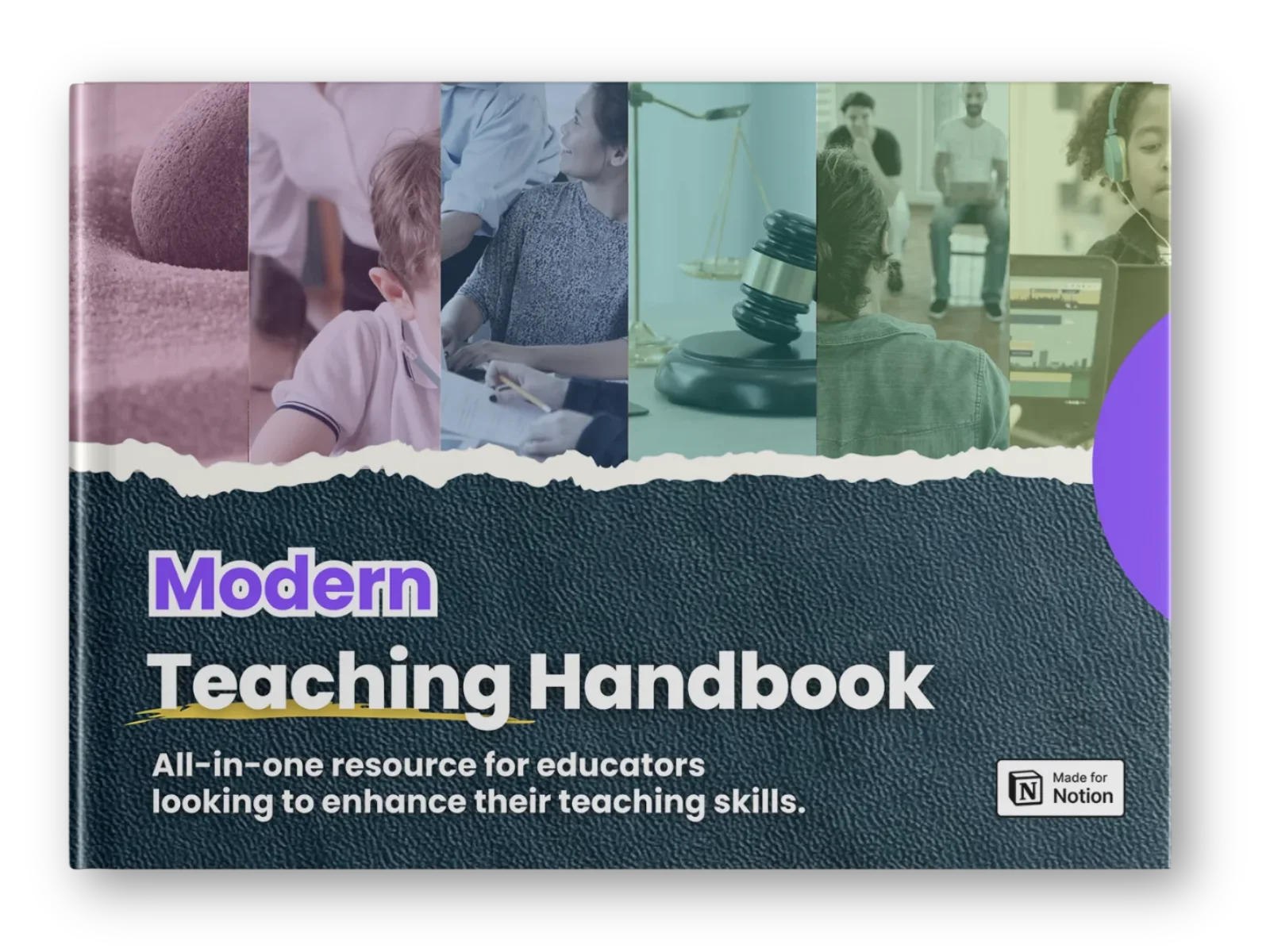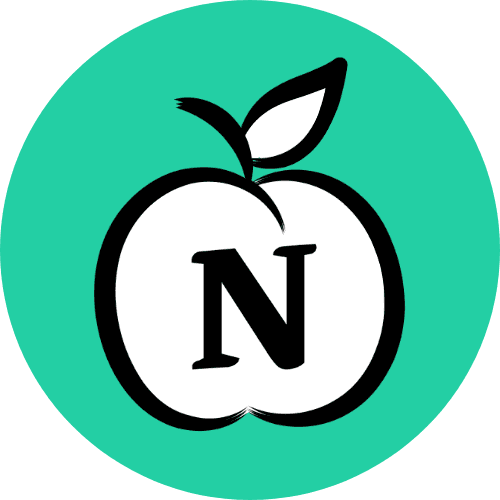Modern Teaching Handbook
Master modern education with the all-in-one resource for educators. Get your free copy now!



How to Integrate EdTech Seamlessly into Your Lesson Plans
How to Integrate EdTech Seamlessly into Your Lesson Plans
How to Integrate EdTech Seamlessly into Your Lesson Plans

Article by
Milo
ESL Content Coordinator & Educator
ESL Content Coordinator & Educator
All Posts
Integrating technology into teaching shouldn't feel like cramming one more thing into your already packed schedule. Smart EdTech integration transforms your lessons naturally, making teaching more effective and learning more engaging.
But where do you start?
How do you choose the right tools?
And most importantly, how do you ensure technology enhances rather than disrupts your teaching?
This guide will walk you through practical steps to weave EdTech seamlessly into your daily lessons, turning technology from a potential distraction into a powerful teaching ally.
Integrating technology into teaching shouldn't feel like cramming one more thing into your already packed schedule. Smart EdTech integration transforms your lessons naturally, making teaching more effective and learning more engaging.
But where do you start?
How do you choose the right tools?
And most importantly, how do you ensure technology enhances rather than disrupts your teaching?
This guide will walk you through practical steps to weave EdTech seamlessly into your daily lessons, turning technology from a potential distraction into a powerful teaching ally.
Modern Teaching Handbook
Master modern education with the all-in-one resource for educators. Get your free copy now!

Modern Teaching Handbook
Master modern education with the all-in-one resource for educators. Get your free copy now!

Modern Teaching Handbook
Master modern education with the all-in-one resource for educators. Get your free copy now!

1. Start with Your Learning Goals, Not the Tools
Gone are the days when adding technology meant squeezing in computer time at the end of class. Today’s successful EdTech integration begins with a simple question: What do you want your students to learn? By putting your learning objectives first, you’ll avoid the common trap of using technology just for technology’s sake.
Instead of hunting for ways to use that new app everyone’s talking about, think about how digital tools can enhance what you’re already teaching.
2. Pick Tools That Actually Solve Problems
In your classroom, every minute counts. That fancy virtual reality program might look impressive, but if it takes 20 minutes to set up and only delivers 5 minutes of learning, it’s not worth it. Look for EdTech solutions that address real challenges you face.
Maybe your students struggle with group participation, a digital discussion board could help quiet students find their voice. Or perhaps you need better ways to check understanding quick digital exit tickets might do the trick.
3. Make Technology Your Teaching Assistant
Consider having students design infographics or educational posters using tools like Canva or Google Slides. These digital creations can then be transformed into classroom displays using professional poster printers, which turn virtual projects into durable learning aids like:
Interactive wall decals for math concept visualizations
Fabric transfers for science fair backdrops
Reusable geometry manipulatives
Multi-language vocabulary banners
This approach keeps one student group engaged in digital design while you work with others, then rotates responsibilities for physical display creation.
4. Build Student Independence Through Digital Literacy
Teaching students uses educational technology, develops vital life skills. Start small, show them how to troubleshoot basic problems, manage their digital workflows, and evaluate online resources. As their confidence grows, gradually release more responsibility.
Soon you’ll find students helping each other solve technical issues, freeing you to focus on teaching rather than tech support.
5. Create a Reliable Backup Plan
Even the best technology can fail. Your internet might cut out, or tablets might not charge overnight. Instead of letting these hiccups derail your lesson, build flexibility into your plans. Keep offline versions of key resources handy.
If you’re using a digital reading assignment, have a few printed copies ready. When students work on collaborative online projects, make sure they know how to continue their work offline if needed.
6. Make Assessment More Meaningful
Digital tools shine when it comes to gathering and analyzing student data. Rather than drowning in paper quizzes, use digital assessment tools to quickly understand what your students know.
Many platforms automatically grade multiple-choice questions and provide instant feedback. But don’t stop there, look for ways technology can assess deeper learning.
Digital portfolios can showcase student growth over time, while project management tools help you track collaboration skills.
7. Keep Parents in the Loop
Today’s EdTech tools make parent communication easier than ever. Class websites let you share upcoming assignments and resources. Digital portfolios give parents a window into their child’s learning journey.
Some apps even translate messages automatically, helping you reach families who speak different languages. Just remember to keep things simple. Parents shouldn’t need a technology degree to stay involved in their child’s education.
8. Stay Flexible and Keep Learning
The EdTech landscape changes constantly, but that doesn’t mean you need to chase every new trend. Start with tools you feel comfortable using, then gradually expand your digital toolkit. Connect with other teachers using similar technology, their experiences can help you avoid common pitfalls.
Most importantly, listen to your students’ feedback. They often have great insights about what’s working and what isn’t.
9. Protect Student Privacy
With great technology comes great responsibility. Before implementing any new tool, check its privacy policies. Make sure you understand how student data is collected, stored, and shared.
Many districts have approved lists of educational technology, starting there. When in doubt, consult with your school’s technology coordinator. It’s better to spend extra time vetting a tool than to compromise student privacy.
Wrapping Up
Seamless EdTech integration doesn’t happen overnight. Focusing on your teaching goals, choosing tools thoughtfully, and staying flexible creates a classroom where technology enhances learning. Start small, learn from experience, and keep your students’ needs at the center of every decision.
1. Start with Your Learning Goals, Not the Tools
Gone are the days when adding technology meant squeezing in computer time at the end of class. Today’s successful EdTech integration begins with a simple question: What do you want your students to learn? By putting your learning objectives first, you’ll avoid the common trap of using technology just for technology’s sake.
Instead of hunting for ways to use that new app everyone’s talking about, think about how digital tools can enhance what you’re already teaching.
2. Pick Tools That Actually Solve Problems
In your classroom, every minute counts. That fancy virtual reality program might look impressive, but if it takes 20 minutes to set up and only delivers 5 minutes of learning, it’s not worth it. Look for EdTech solutions that address real challenges you face.
Maybe your students struggle with group participation, a digital discussion board could help quiet students find their voice. Or perhaps you need better ways to check understanding quick digital exit tickets might do the trick.
3. Make Technology Your Teaching Assistant
Consider having students design infographics or educational posters using tools like Canva or Google Slides. These digital creations can then be transformed into classroom displays using professional poster printers, which turn virtual projects into durable learning aids like:
Interactive wall decals for math concept visualizations
Fabric transfers for science fair backdrops
Reusable geometry manipulatives
Multi-language vocabulary banners
This approach keeps one student group engaged in digital design while you work with others, then rotates responsibilities for physical display creation.
4. Build Student Independence Through Digital Literacy
Teaching students uses educational technology, develops vital life skills. Start small, show them how to troubleshoot basic problems, manage their digital workflows, and evaluate online resources. As their confidence grows, gradually release more responsibility.
Soon you’ll find students helping each other solve technical issues, freeing you to focus on teaching rather than tech support.
5. Create a Reliable Backup Plan
Even the best technology can fail. Your internet might cut out, or tablets might not charge overnight. Instead of letting these hiccups derail your lesson, build flexibility into your plans. Keep offline versions of key resources handy.
If you’re using a digital reading assignment, have a few printed copies ready. When students work on collaborative online projects, make sure they know how to continue their work offline if needed.
6. Make Assessment More Meaningful
Digital tools shine when it comes to gathering and analyzing student data. Rather than drowning in paper quizzes, use digital assessment tools to quickly understand what your students know.
Many platforms automatically grade multiple-choice questions and provide instant feedback. But don’t stop there, look for ways technology can assess deeper learning.
Digital portfolios can showcase student growth over time, while project management tools help you track collaboration skills.
7. Keep Parents in the Loop
Today’s EdTech tools make parent communication easier than ever. Class websites let you share upcoming assignments and resources. Digital portfolios give parents a window into their child’s learning journey.
Some apps even translate messages automatically, helping you reach families who speak different languages. Just remember to keep things simple. Parents shouldn’t need a technology degree to stay involved in their child’s education.
8. Stay Flexible and Keep Learning
The EdTech landscape changes constantly, but that doesn’t mean you need to chase every new trend. Start with tools you feel comfortable using, then gradually expand your digital toolkit. Connect with other teachers using similar technology, their experiences can help you avoid common pitfalls.
Most importantly, listen to your students’ feedback. They often have great insights about what’s working and what isn’t.
9. Protect Student Privacy
With great technology comes great responsibility. Before implementing any new tool, check its privacy policies. Make sure you understand how student data is collected, stored, and shared.
Many districts have approved lists of educational technology, starting there. When in doubt, consult with your school’s technology coordinator. It’s better to spend extra time vetting a tool than to compromise student privacy.
Wrapping Up
Seamless EdTech integration doesn’t happen overnight. Focusing on your teaching goals, choosing tools thoughtfully, and staying flexible creates a classroom where technology enhances learning. Start small, learn from experience, and keep your students’ needs at the center of every decision.
Modern Teaching Handbook
Master modern education with the all-in-one resource for educators. Get your free copy now!

Modern Teaching Handbook
Master modern education with the all-in-one resource for educators. Get your free copy now!

Modern Teaching Handbook
Master modern education with the all-in-one resource for educators. Get your free copy now!

Table of Contents
Modern Teaching Handbook
Master modern education with the all-in-one resource for educators. Get your free copy now!
2024 Notion4Teachers. All Rights Reserved.
2024 Notion4Teachers. All Rights Reserved.
2024 Notion4Teachers. All Rights Reserved.
2024 Notion4Teachers. All Rights Reserved.







